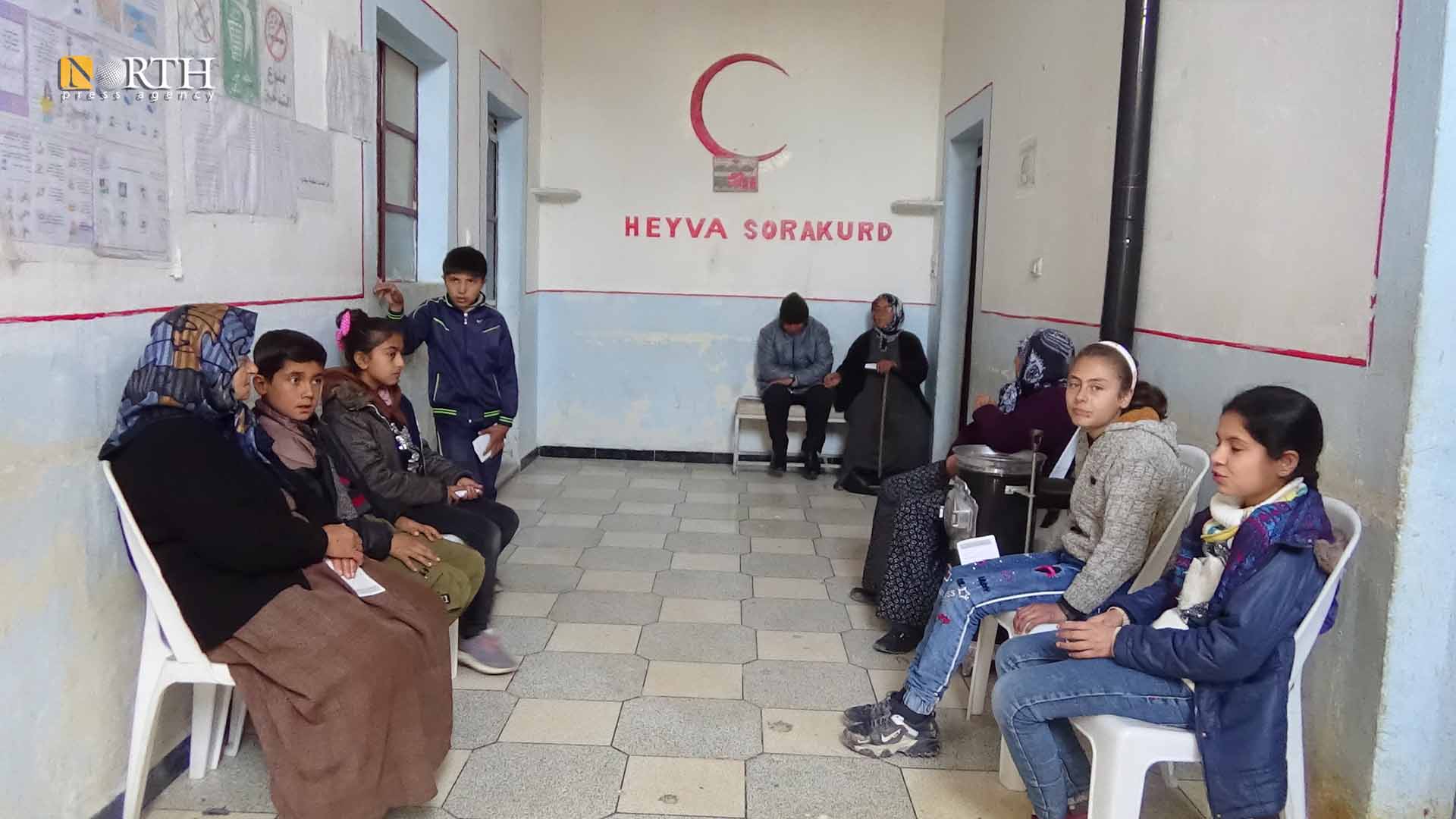
ALEPPO NOURTHERN COUNTRYSIDE, Syria (North Press) – The 71-year-old Shammo Hamsho, an IDP of Afrin in the northern countryside of Aleppo, north Syria, received intramuscular injections to treat leishmaniasis ulcers that cover his hands and leg.
Hamsho, hails from the village of Brad, in Sherawa district, south of Afrin, and lives in the village of al-Wahshiya village, endures extra burdens, since he has to buy intramuscular injections because they are not available in the Kurdish Red Crescent centers.
In the northern countryside of Aleppo, hundreds of Afrin IDPs and the inhabitants of the area suffer from leishmaniasis, where the majority of infections are concentrated in the face and limbs, and there are cases of disfigurement due to not receiving timely treatment.
According to the Kurdish Red Crescent, 318 are infected with Leishmaniasis in the northern countryside of Aleppo.
Government siege
In March of 2018, Turkish forces and Turkish-backed armed factions took control over the city of Afrin, displacing more than 300,000 indigenous people towards Shahba region, Aleppo northern countryside.
Some of them resorted to camps namely al-Awda, Afrin, Barkhodan, Sardam and Shahba, while others settled in 42 villages and towns in Aleppo northern countryside, while some families moved to other Syrian towns and cities, most notably to areas run by the Autonomous Administration of North and East Syria (AANES).
Leishmaniasis, known locally as “Aleppo boil” is a parasitic disease and caused by infection with Leishmania parasites, which are spread by the bite of sand flies.
The region’s lack of a sewage network, the spread of uncovered sewers, and the stagnation of water in Queiq River that passes through the northern countryside of Aleppo is the main reasons of the leishmaniasis widespread, according to health workers.
In addition to the wars that the region witnessed, which left destruction and ruins, and led to the proliferation of the fly causing the infection.
Alya’ Muhammad, co-chair of the Kurdish Red Crescent Organization, said that the government siege on the northern countryside of Aleppo exacerbates the suffering of patients, as this has led to the loss of medicines, especially intramuscular injections that some people with leishmaniasis need.
The seven points of the Kurdish Red Crescent, distributed in villages and towns, provide only direct intralesional injection.
Infected children
In light of the fears of the increase in the number of infections in summer, the Kurdish Crescent is facing difficulties in controlling the number of cases, especially since the area lacks dermatologists, which delays the diagnosis and confirmation of the infection.
In Barkhodan camp, five-year-old Rashid Jemmo has been suffering from leishmaniasis since last summer, as the pimple left a mark on his face.
Rokan Hamo, the child’s mother, who hails from Maabatli district in Afrin countryside, said that at first she did not care about the pimple that appeared on her child’s face, but after about two months, she took him to the camp’s clinic to be diagnosed with leishmaniasis.
The mother pointed out that after giving him three injections, her child became afraid of injections, forcing them to stop treatment for a whole month and use skin ointments, but all in vain.
Hamo complains about the spread of insects, especially during the summer, due to water gathering and the proximity of bathrooms to tents, which provides a suitable environment for the spread of sand flies that cause leishmaniasis.
Hamo owns a mosquito net, but said that she cannot use it because of the small space of the tent, as it includes a fireplace in the middle, and it is also a kitchen, a bathroom and a bedroom.
